By the start of the 1960s, BR had appreciated that diesel locomotives more powerful, yet lighter in weight, than those currently being built were needed. A specification for a 2,750bhp Type 4 with a 19 ton axleload was published to serve as an invitation to the British locomotive industry to come up with proposals. Three companies built prototypes against the specification, one being the English Electric Company (EE).
EE’s development of the ‘V’ engine used in Class 20 and ‘40’ had raised the output per cylinder from 125 to 169bhp at 850rpm. This meant that the 16-cylinder version could be offered at 2,700bhp, instead of 2,000bhp as in Class 40. The uprated diesel was already on order for BR in EE’s Class 37 but with the 12-cylinder unit rated conservatively at 1,750bhp at 850rpm.
EE was fully committed with contracts for equipment for both the home and overseas markets, notably Class 20, ‘37’, ‘40’ and ‘55’ under TOPS notation. In order to produce a new locomotive design in the shortest time and with the minimal drawing office input, the company arranged for its Vulcan Foundry workshops at Newton-le-Willows north of Warrington to use the underframe and bogies then in production at the factory for Class 55 as the basis.
The resultant locomotive emerged in May 1962 and carried the designation ‘DP2’, short for Diesel Prototype 2, where the original ‘Deltic’ was EE’s first prototype. By now, however, BR had already ordered Type 4s to a design produced by Brush Electrical Engineering Co Ltd (Brush), which used the Sulzer 12LDA28-C engine, rated at 2,750bhp at 800rpm, designated Class 47 under TOPS.
Although EE submitted tenders against enquiries for further Type 4s, its 16CSVT unit was regarded by BR’s Chief Mechanical & Electrical Engineer (CM&EE) as unproven and rejected.
Nevertheless, BR and EE entered into a hire agreement for DP2 and it worked initially on the London Midland Region (LMR) and later the Eastern Region (ER) in a competent manner.
The National Traction Plan produced in February 1965 examined the quantity of diesel and electro-diesel locomotives that were required in the light of the 1963 Reshaping (Beeching) Report. The Plan identified a deficit of 48 Type 4s and, when the BR Board gave authority for a batch of this type in April to address the shortage, stress cracking issues began to emerge with the engines in Class 47.
Prior to this approval and also in April, BR had made a comparison between the 3,300bhp Class 55 ‘Deltic’ and Class 47 for the WCML north of Crewe and concluded the balance of advantage lay with the former for reliability and scheduling.
In June, BR wrote to the Ministry of Transport (MoT) to seek authority for the 50 additional Type 4s authorised by the Board in order to eliminate steam by 1970 and diesel was the cheapest option. The Minister was reluctant to accept this view and wanted to consult with the Ministry of Power. This was because, concurrently, the question of extending West Coast Main Line (WCML) electrification to Glasgow was being debated, both within BR and the MoT and between them.
The BR Chairman pointed out to the Minister that the National Coal Board said it could no longer supply all the coal BR required. In his blunt style, he said a decision was needed whether to electrify to Glasgow and so give the public what they wanted, or whether the first consideration should be saving money by buying diesels.
BR’s calculations showed that the financial advantage lay with an order for 50, rather than 110 Type 4s, both quantities having been specified in the April tender. This was because the lower number would purely permit the elimination of steam, while the extra ones would create a reserve pool for possible growth in liner and block trains, which were still in their infancy at the time.
The MoT also queried why BR did not want the new order to be as powerful as the electric traction delivered for WCML electrification then nearing completion between Euston, the West Midlands and North West. BR responded that more powerful units might be difficult to redeploy as and when full WCML electrification was sanctioned.
It took until August 20 for the Minister to give his approval and, in line with BR’s submission, the quantity was 50, which left the railways with a Type 4 traction shortage by the early 1970s.
The question now confronting the BR Board was whether to order additional Class 47s or look at an alternative. On October 8 the Board Member for Engineering, whose subordinates included the CM&EE, presented a lengthy paper describing the multiple issues being faced with the Sulzer LDA28 diesel in the various Type 4 classes in which it was fitted. Performance was regarded as unsatisfactory and would take several years to resolve.
Two options were put forward, one being to order more ‘47s’ and the other options for to buy 50 DP2-type locomotives. Arguments in favour of the former were:
- Considerable experience had been gained with the Sulzer engine through living painfully with its technical development.
- There would be continued standardisation and continuity in production.
- Ordering a different design would give the impression that a serious mistake had been made in opting for the Sulzer engine.
- While DP2 had run 138,000 miles in less than 3½ years, which included a long spell out of service, it was a single prototype.
The case for buying 50 DP2s was:
- DP2 was a direct development of locomotives that had generally given good service.
- There was unlikely to be a problem with the engine. This view was a volte face of the opinion previously expressed that it was unproven.
- DP2 shared a significant number of major components with other EE classes in BR service, examples being bogies and traction motors.
- DP2 was 9% cheaper than Class 47.
- EE was prepared to give guarantees concerning reliability and performance.
- An order for 50 DP2s would give experience and help to guide future procurement.
- EE would be responsible for the whole of the design, whereas three contractors were involved with Class 47.
- Delivery dates were likely to be the same whichever design was chosen.
The memo concluded with a recommendation to buy DP2s, which received Board approval on October 14. In view of the problems with previous designs of diesels, the Board wanted guarantees from EE on locomotive availability.
Contract negotiations on several fronts began immediately. The financial arrangements were subject to a four-way dialogue involving not only BR and EE but also the MoT and the Treasury and BR noted that these Government Departments proved very difficult because of their attitude to the proposed arrangements.
EE had offered a leasing deal in place of outright purchase and so transfer to BR the benefit of tax relief on capital expenditure that it would not otherwise receive as a nationalised industry. The Treasury was unhappy with this arrangement and blocked it but eventually EE came up with a hire contract for the locos from an EE subsidiary, English Electric Leasing Ltd. The latter bought the fleet from its parent and this is why, from new, the locos bore a plate that advised they were on hire.
Pending finalisation of the contractual arrangements and in order for EE to order long-lead materials, on November 12 BR issued a letter of intent to EE. It took until August 1967 for the contractual arrangements to be formalised.
Detailed planning within EE now got under way, and was co-ordinated by the Traction Sales and Contracts Department, based at Bradford. Component construction was, as usual, split between several constituent parts of EE. The mechanical parts, naturally, were down to Vulcan. Electrical machines fell to Preston while Rugby made the engines (for assembly at Preston or Vulcan) and Bradford was to produce traction motor gear wheels and pinions.
EE’s last tender for Type 4s had been submitted in April 1965 but BR had issued a revised tender specification in August and it contained features not found in either Class 47 or DP2. These included the provision of an electric train supply, train air braking, rheostatic loco braking, multiple-unit and push-pull operation and resilient gears.
BR’s CM&EE then came up with additional requirements, notably slow speed control of the locomotive for merry-go-round workings. EE had developed equipment to compensate for the transfer of the locomotive’s weight onto the rear bogie when starting a heavy train and was keen to try this. BR’s CM&EE agreed the fitting of one set of this equipment would be a good idea to assess its usefulness.
A joint BR/EE decision brought the fitting of inertial engine room filtration instead of oil-wetted filter panels and a 1,000 gallon steel fuel tank, both features increasing overall length and weight. These additional requirements to the August 1965 tender specification were agreed on February 24 1966.
John Dowling, the CME at Vulcan was coming under pressure from EE’s Bradford Traction Sales office over costs. In a rebuttal memorandum of March 28 he admitted that the new design was “challenging” and bore little resemblance to EE’s April 1965 tender for 50 DP2s.
A memo of June 17 from Vulcan to Bradford is uncompromising. It said that the latter had better accept Vulcan’s revised quote for a vital order for both Works. The changes to the DP2 specification eventually pushed up the price from £104,950 to £120,930.
In June 1966 an internal submission was made to the BR Board in the following terms. The hire period for the locomotives was to be seven years, with a series of one-off and quarterly charges. Based on anticipated cost rises in wages and materials during construction, the imputed cost per locomotive by the date of delivery was given as £131,000. Aggregating the charges for the seven years of the hire period would involve an outlay of £168,500. Accounting calculations that adjusted the hire charges to represent a deferment of payment over outright purchase showed this option to be 2½% more expensive but acceptable.
EE offered initially a delivery schedule of 14 months, commencing in January 1967 but this was revised to run from July 1967 until June 1968. Once half the fleet had been delivered, EE would guarantee an availability of 84% (42 locomotives) each day, with a daily penalty of £50 per locomotive for any shortfall.
This figure assumed two locomotives would be undergoing works overhauls, while five would be on routine maintenance at any one time, plus one “spare” for unplanned repair, making eight out of traffic. Reputedly, EE based the calculation on DP2’s performance and the figure was comparable with the availability of EE’s Class 37.
Styling the locomotive exterior involved EE, BR’s CM&EE and the BR Design Office, with an external consultant (Ted Wilkes of Wilkes & Ashmore) engaged to provide input. The consultants had worked for BR previously, including styling Classes 35 and 47.
In February 1966 the Design Office wrote to the CM&EE as follows: “I enclose copies of drawings of the air smoothed locomotive front end, which contributes to the performance of the locomotives at the speeds envisaged. The driver’s vision is not interfered with by distortion caused by excessively curved glass and for this reason it’s placed in the centre of the cab. The driving seat is fairly well in from the bodyside and if it can be moved a little further inwards, able to approach an air smoothed version. If not, unlikely to get much further than e.g. Brush Type 4 and the case for curved glass would be less strong.
The front end will also be affected by alterations you may want for the body section. Wind tunnel tests show it is important to eliminate projections and for visual reasons, hope they can be avoided.
I would prefer the route indicator to be placed below the windows. Perhaps we can try again to get agreement to the use of the small SR version. Should have thought good headlights would have adequately made up for loss of visual warning, resulting from the use of smaller indicators.”
This proposal would have produced a very stylish, possibly futuristic result. Unfortunately, the Design Office seems not to have been briefed on developments in cab design taken forward in 1964 by the CM&EE in consultation with the Railway Inspectorate. A cab mock-up had been produced at Derby and signed off by Brigadier Langley on February 18 1965.
It is unclear whether this was just in connection with a planned new design of EE Type 3 or as a template for all future orders. The plans for further Type 3s were dropped as a result of the March 1965 National Traction Plan identifying a surplus of 77 diesels in this power category.
Possibly at the request of the Inspectorate in order to increase the size of the cab front yellow warning panel, the route indicator box (often referred to as headcode panel) had been moved to above the front windows in the Derby mock-up. No doubt based on experience with earlier designs, where multiple-unit jumpers were on the buffer beam, these connections were now to be at waist height.
Unaware of the Derby mock-up, EE’s Bradford Drawing Office proposed cab styling that featured a wrap-around windscreen, similar to that used on the Trans Pennine DMUs, with the route indicator box set below the windscreens. Whether this was the version submitted by BR’s Design Office to the CM&EE in February 1966 is unclear. On 26 April, however, Vulcan reported to Bradford that matters on cab front design were settled and the Derby mock-up was being followed, further input from the stylist being irrelevant.
Even when EE’s proposed cab styling had been rejected, BR did not supply drawings for the Derby mock-up, so as part of the production of detailed drawings for the entire loco, Vulcan had to produce rudimentary interim sketches of the front end. Unfortunately, these interim drawings were sent to Wilkes & Ashmore, which submitted a critical report on them in April. EE was a bit miffed at the situation.
Both the Design Office and Ted Wilkes wanted as smooth a front end as possible to minimise air resistance and pushed for the route indicator panel to be below the windscreen. Wilkes also suggested a tapering vertical profile but with the styling to focus on the loco’s horizontal lines.
The CM&EE did not yield on the Derby cab mock-up with its roof-mounted route indicator box. The debate over styling rumbled on and in November the CM&EE still wasn’t happy with the proposals for this aspect.
A memo from the BR Design Office in January 1967 expressed frustration at the events within the project, which was described as “an unhappy story”. A major factor had been that the CM&EE had supplied the BR Design Office with the wrong drawings in February the previous year and had therefore been wasting their time!
Throughout early 1967, the Design Office was still trying to get changes made to the indicator box but it was too late because some roof sections had been manufactured already. The foregoing explains why, what might have been something of a styling classic ended up with the new class having nothing better than a purposeful cab outline.
January 1967 was also when the CM&EE confirmed to the Board’s Chief Officer New Works that the new locomotives would be allocated to the LMR and that the latter should assign a Regional authorisation number. Timings for Class 50 on the East Coast route were produced at one stage and showed an advantage over Class 47 by virtue of the former’s 100mph maximum speed. For whatever reason, however, the type was never used in regular service on that route.
Meanwhile, EE was progressing with the design of the technical parts. Its prototype locomotive, DP2, was used as a test bed for the control system destined for Class 50, the TOPS designation, and it went to Vulcan Foundry in January 1966 for changes to be made and a routine examination.
In November further modifications were made at Finsbury Park when slow speed control was added. The system was tested in the Doncaster area in January 1967 with a train weighing 1,650 tons. On wet rails, DP2 struggled to restart on a 1 in 200 gradient but the use of the newly-fitted tractive effort control and the automatic low-speed electronic wheelslip protection were judged to be beneficial.
Within EE, generator production was switched to Bradford but deliveries commenced much later than planned. This then held up testing the engines that were to be fitted into individual locomotives. Instead of engine and generator sets being shipped to Vulcan from autumn 1966, in the event none were ready until March 1967.
Vulcan was now able to run up a complete locomotive and testing revealed that the engine was running hot due to inadequate internal ventilation. Whereas DP2 had opening bodyside windows and large oil filter grilles, the Design Panel had insisted on none of these and also wanted a sealed roof. Vulcan’s solution was to use the normal reserve margin within its calculations, rather than derate the engine by 1%.
Body styling also forced the inertial filter vents to be at cantrail height. Dependant on the direction of travel, the air drawn in would include engine exhaust, which was greasy and hot. Over time, these gases coated the filters with an oily residue that was almost impossible to remove. The locomotive interiors became so filthy that staff at Bristol Bath Road depot received a premium for working on the class.
Following testing within Vulcan during August, class doyen D400 ran trials on BR during September and was accepted by BR for traffic on October 3. It was, however, to take two months before D401 was commissioned and by the end of 1967 only four were in service.
The main problem centred on the electronic control system. EE had limited experience of systems on electric locomotives and multiple units but Class 50 was the first full-scale use of such a control system on a diesel design.
Two memos within BR referred to EEs inability to deliver equipment to the agreed programme. One from the LMR to the Board in 1966 bemoaned late delivery of Class 86, while the following year the Bournemouth electrification scheme was the issue. These proved prophetic as regards the ‘50s’.
The revised delivery schedule provided for commencement in July 1967 and completion in June 1968. Although the first of the class was not ready by July, EE claimed there was no delay and remained committed to having 17 examples with BR by the end of the year rather than the promised 21, a target it missed by a mile. BR’s CM&EE observed that labour disputes relating mainly to poor prospects for future orders at Vulcan were virtually holding EE to ransom.
By March 1968, EE gave November 9 as when the order would be completed but this was three weeks adrift. Towards the latter part of 1968, Vulcan personnel could see that there was little prospect of continuing employment and construction slowed. Previously five units per month were being outshopped but it took two months for the last five to be delivered. EE paid £213,142 in liquidated damages for the delivery delays, roughly equal to the cost of two locomotives.
After D400’s release to traffic, the September 1967 issue of Modern Railways carried an editorial ‘Type 4 With Trimmings’ reputedly inspired by a disaffected EE employee bemoaning all the gadgetry that had been added to DP2’s design.
In February that year, the LMR’s General Manager had written to the Board Member for Operations to express concern about the changes that the CM&EE had made to DP2’s design. The appearance of the September editorial and severe delay in deliveries prompted his successor to voice the same concerns to the BR Chairman who was, coincidentally, his predecessor. The memo continued by saying the late delivery of ‘D400s’ had completely upset the plans for the elimination of steam and who had taken it upon themselves to make so many changes to a simple and proven design.
A top-level exchange of memos ensued that became acrimonious as the BR CM&EE sought to justify matters. The latter argued that the problems plaguing locomotive commissioning at the time involved equipment which had worked satisfactorily on DP2. In truth, some of his arguments bent the facts to suit his position.
Sadly, history records that, once the commissioning issues were resolved, the engines began to give trouble due to changes made by EE during manufacture. Once these had been rectified, the electrical machines, in particular the main generator, proved unreliable. While the same design of component had been trouble-free in DP2, it was alleged that EE substituted lower-grade insulation for the production series.
BR had requested an alternator in place of a highly-stressed main generator. Unfortunately, EE had no design available and traditional DC machines were used, which was to cost BR, and the preservation movement, dear in the ensuing 50 years.
- In RAIL 837, David Clough talks to Class 50 Alliance Chairman Jonathan Dunster about what is involved in keeping a fleet of ‘50s’ operational.
This feature can be read in RAIL 836

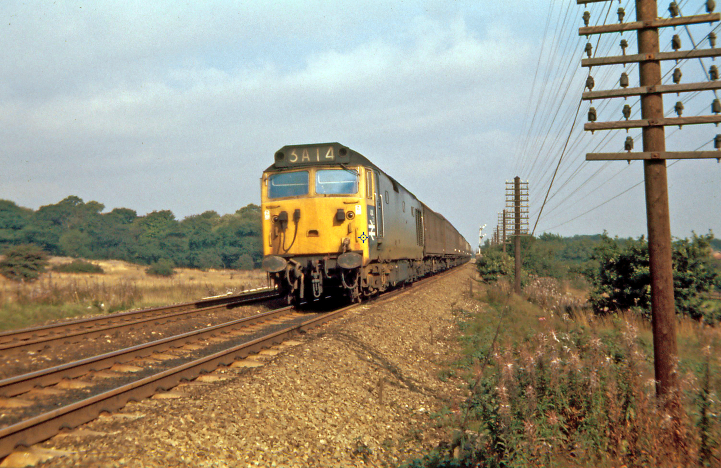
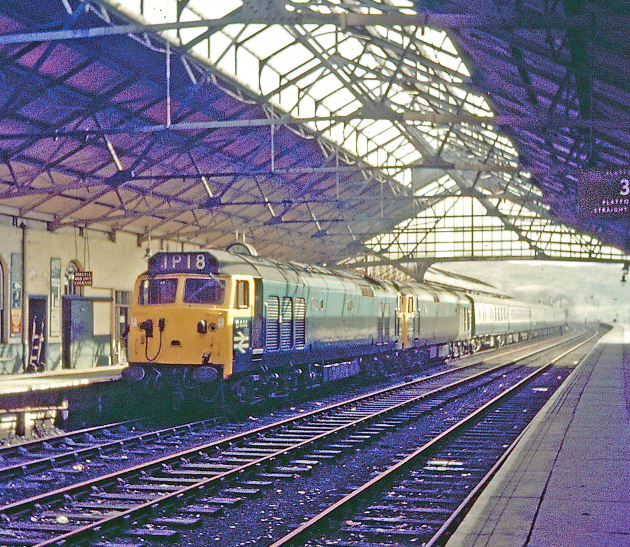
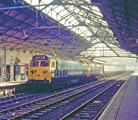
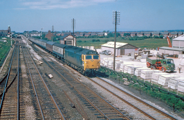
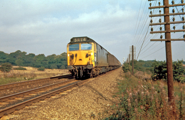
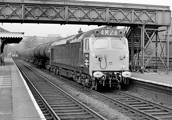
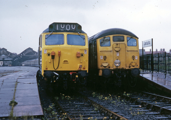
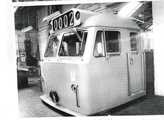

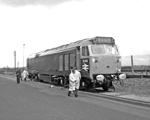
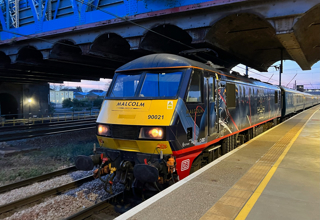
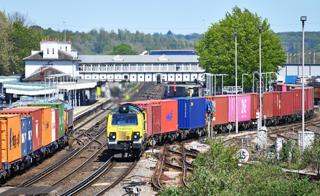
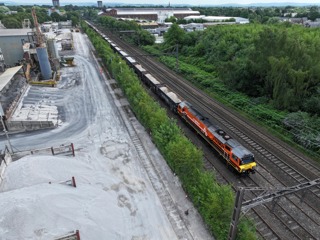
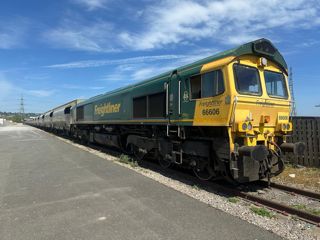
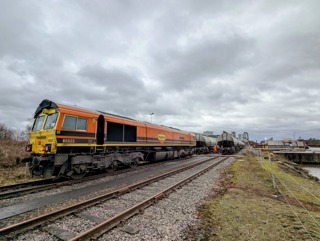










Howard - 26/11/2017 09:33
'dependent' (the adjective) is not spelt 'dependant' (the noun). Hope that is helpful.